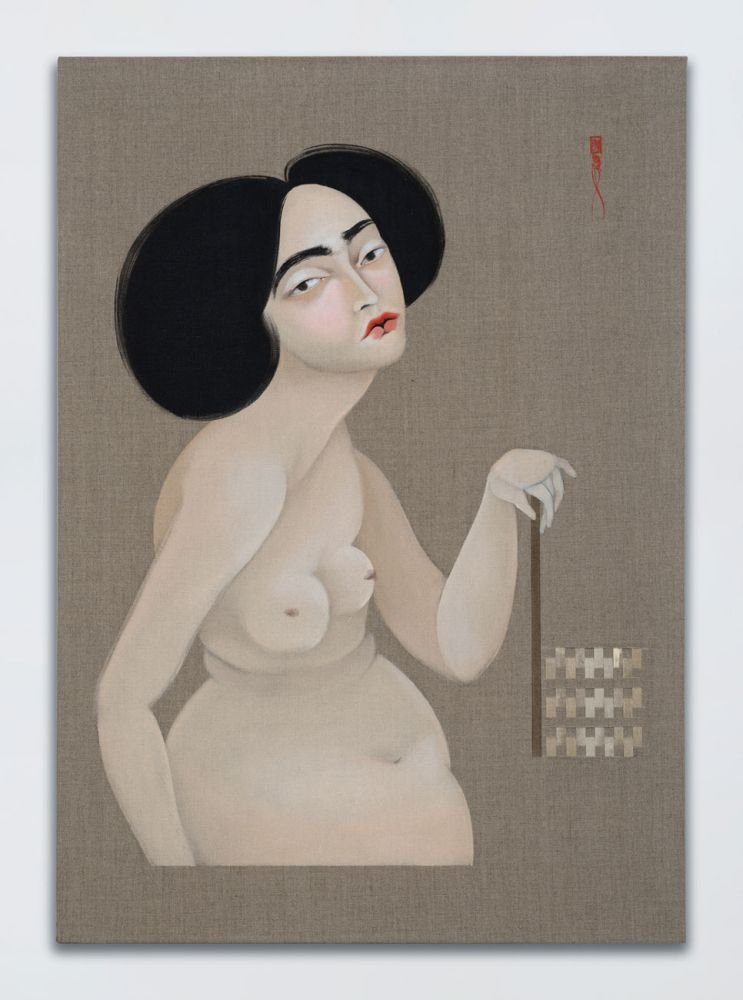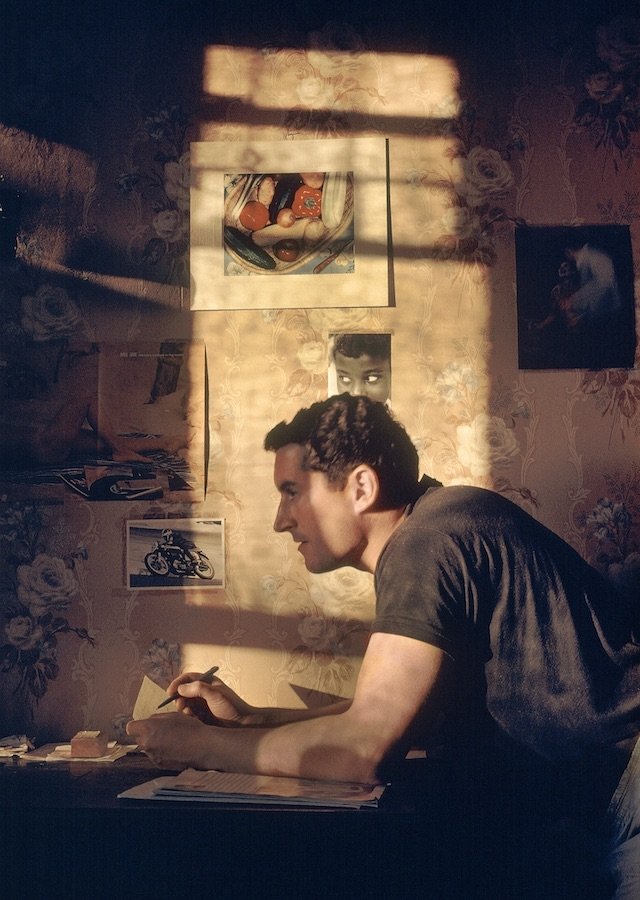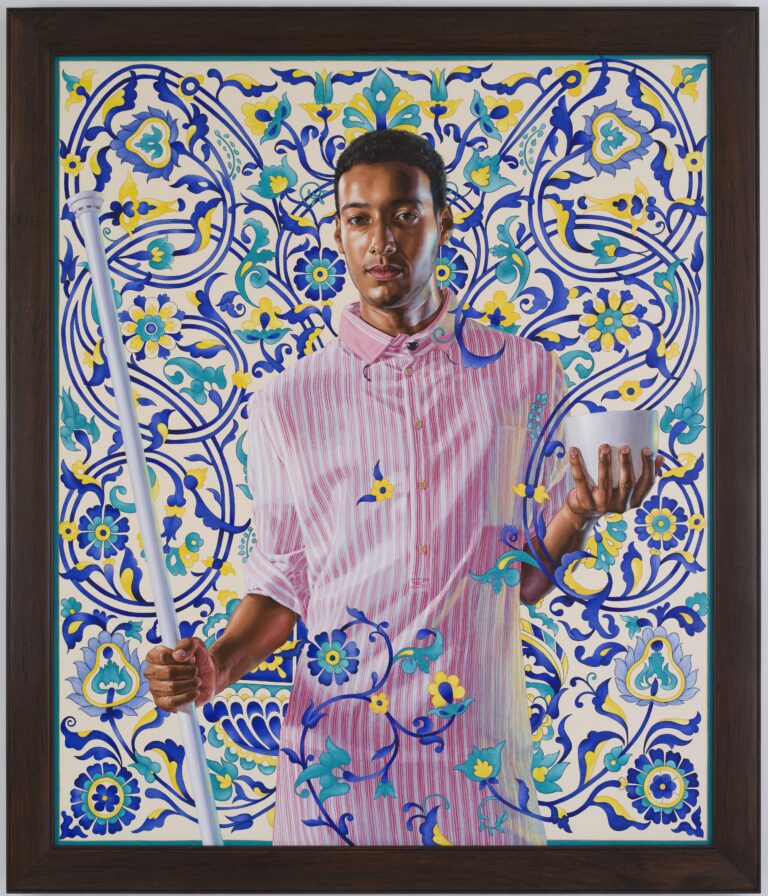Hayv Kahraman’s paintings often focus on perceptions. In the case of her paintings on women their bodies are seen to be objects that must be flawless and beautiful, whilst also showing the realities of their life, and in particular when their voices aren’t allowed to be heard. Kahraman conveys this so chillingly and with such a cold aesthetic that the female figures are in some cases “ghostly” presences in their own lives; Let the Guest be the Master series (2013-14). This collection of paintings shows the divide between gender restrictions; men may meet outside in the courtyard, the women cannot, and are instead hidden behind the walls. But still their presence is there; they see, hear and know, their transparent figures filling the walls of the house, trapped by it and yet a part of its construct as well.
There is also a commentary on society within Kahraman’s art, such as the pressures on women from both external and internal forces on creating and maintaining a beauty that can be painful. For this Kahraman shows that the act of being ‘womanly’ is not natural but self-exacted on the body, as if punishing the skin for growing hair or marking the limbs for where the fat should be cut away or to have more curves inserted. In Levelled Leisure (2010), this view is captured so simply and with the additional voice that, as women, we’re not just placing this pressure on ourselves, but also on other females. The judgement separating women from supporting one another, to instead continuing a procession line of unobtainable beauty, with each woman shown to be walking on thin sticks – not able to be comfortable, to be themselves, but always treading a hard line. It reminds me of the phrase ‘placed on a pedestal’ to have high demands that you mustn’t fall from.
 Levelled Leisure, 2010, Oil on Linen. From the Series ‘Pins and Needles.’ © Hayv Kahraman.
Levelled Leisure, 2010, Oil on Linen. From the Series ‘Pins and Needles.’ © Hayv Kahraman.
It’s not just the images in Kahraman’s work that carry such significant meanings, but also the choice of her materials. In the series Audible Inaudible (2015-16), Kahraman looks at the frightening memories of sound – of the noises she inescapably heard during the war in Iraq – and wanting to transfer this knowledge to her art. Through her research Kahraman found how mothers used their own bodies to protect their children from the harms of war; both psychologically as well as physically. In conveying this to her art, Kahraman pushed acoustic foam through the paintings, its material known to absorb sounds and stop them from breaking through, just as the mothers had for their children. This expression of material has continued into other works by Kahraman such as the Mnemonic Object series, in which the artist reflects on a personal object; a Mahaffa (a hand-woven fan) brought with her family in escaping Iraq. Its material becoming a part of the images, and in doing so looks at conserving the past and a connecting to it through the repetitive act of hand-weaving the material, whilst also presenting the conflicting emotions it raises. Its presence in the images at times being consuming, from forming the entire skin of the model, to being minimalised and held away from them by the tips of their fingers, such as in Mahaffa 2 (2017) with the flag held upside down and the model’s eyes looking away from it.
 Mahaffa 2, 2017, Oil on Linen. From the Series ‘Mnemonic Object.’ © Hayv Kahraman.
Mahaffa 2, 2017, Oil on Linen. From the Series ‘Mnemonic Object.’ © Hayv Kahraman.
Kahraman uses her own experiences and memories to create stunning work. From the materials she uses, the softness of her brush and the clarity it produces. Raising knowledge about the lives and existing pressures on women in their everyday environment. Through her artwork’s investigative quality, Kahraman provides the viewers a chance to look at things a bit more carefully.











